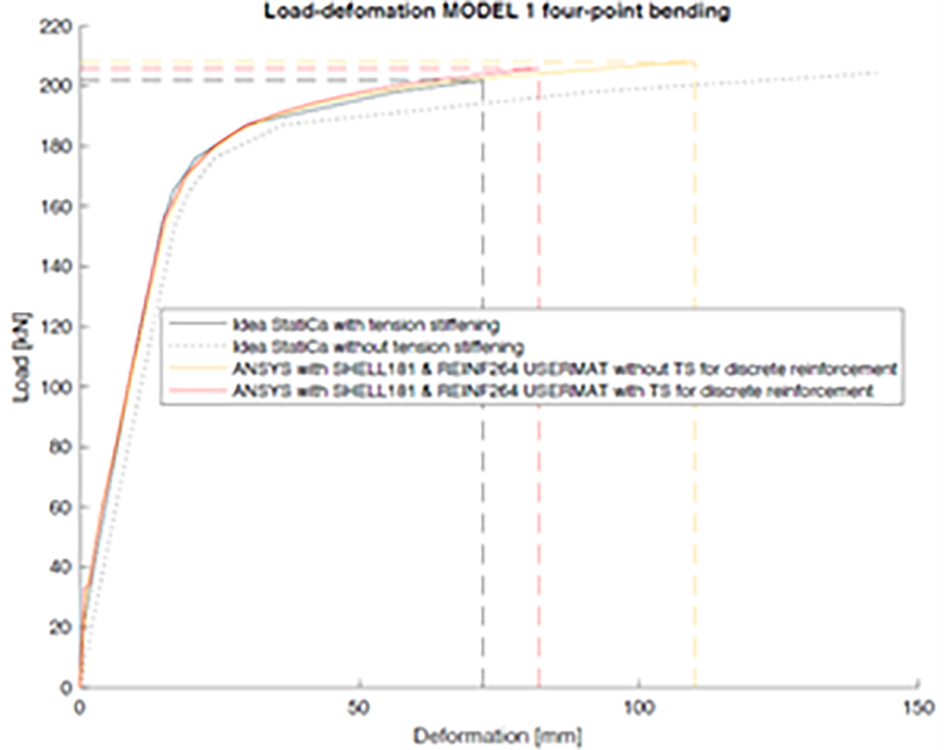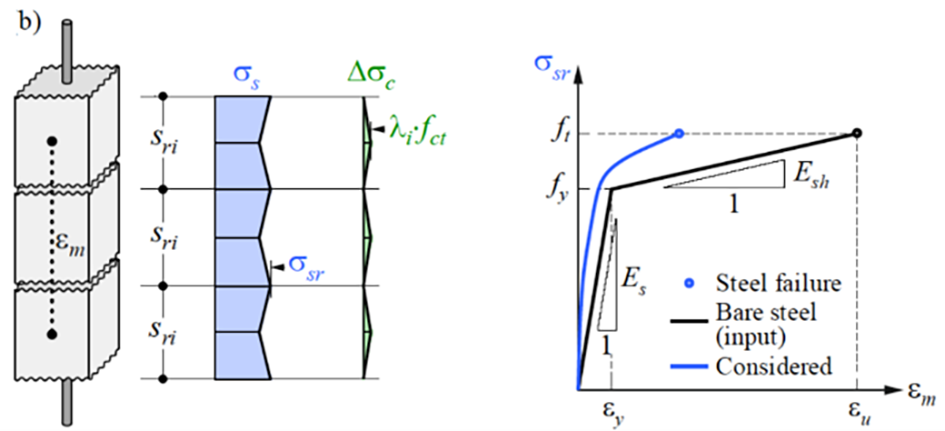Implementation of the Compatible Stress Field Method in ANSYS Mechanical APDL
Author: Simone Lucini
Language: English
Abstract
The use of stress fields and strut-and-tie models is a commonly employed method in designing and dimensioning details in concrete structures, particularly in discontinuity regions where traditional sectional design principles do not apply. Software such as Idea StatiCa, which implements the Compatible Stress Field Method (CSFM), has been verified as an effective tool for designing and assessing concrete structures. The model's assumption of coinciding principal directions of stress and strain enables the separate evaluation of behaviour in each direction. It makes it practical for engineering applications by eliminating the need for complex constitutive laws in the nonlinear Finite Element (NLFE) analysis.
In this master thesis, the CSFM has been implemented in ANSYS Mechanical APDL as a user-defined material (CSFM-USERMAT), including the programming of the CSFM and the verification of the code by comparing the predictions with well-established Software Idea StatiCa. The implementation and validation of the CSFM in ANSYS has been conducted in two phases.
In the first phase, the elements in ANSYS sui-table for implementing the constitutive relationship of the CSFM have been identified, focusing on the discrete reinforcing element REINF264. In the second phase, the user-defined material was implemented and validated through simple models and real structural members to compare the structural response and analyse the software's ability to reproduce the load-deformation behaviour of concrete beams.
The implementation of CSFM in ANSYS MAPDL provides a mixed modelling approach, including the use of discrete and smeared reinforcing elements. This has been achieved by utilizing the existing Cracked Membrane Model (CMM-USERMAT) for the plane stress state of the base element and the CSFM-USERMAT to be implemented for the one-dimensional stress state of the reinforcing, following the constituti-ve model of the CSFM. This method, in AN-SYS, is applied to shell and solid elements, whi-le in the software Idea StatiCa is applied to plane elements.
The results obtained from the analysis of the structural response of four-point tests on beams considering tension stiffening showed an excellent correspondence between the results from the implemented CSFM in ANSYS and the ones from the Idea StatiCa software in terms of ultimate load, as in terms of load-deformation behaviour. Furthermore, the failure modes in the discrete reinforcing bars agree well with the predictions from Idea StatiCa Detail.


